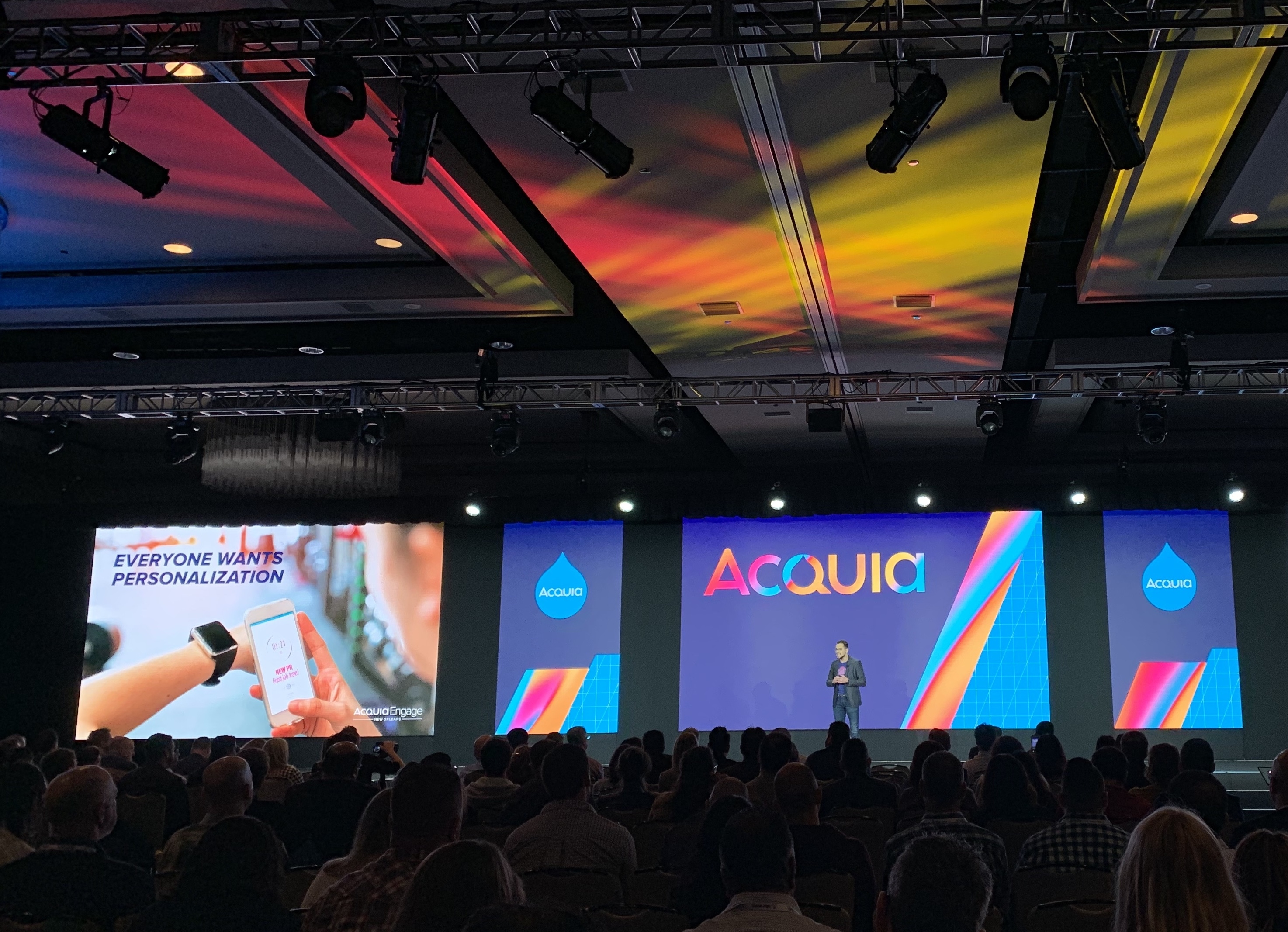After two years of attending events online, my colleagues Alex Dergachev, Kate Bundy, and I had the opportunity to travel to New York City to attend Experience Acquia, which brought together Acquia’s technology partners from across the Drupal ecosystem.
Acquia representatives and leaders shared their latest products and updates. Between Kate and I, one product stood out as especially valuable to Evolving Web's clientele in Higher Education and Government: Site Studio.
As a former website manager in higher education, Kate immediately saw the value in a tool like Site Studio for content creators and managers to interact with a user-friendly, low-code interface to drag and drop components into place and focus on the content itself.
As a non-technical marketer working with Drupal websites myself, I see the tool as a way to independently run marketing campaigns as it allows creating multiple versions of a landing page without IT help. Imagine all the possibilities if you could create rich component-based pages for various campaigns you work on daily!
Site Studio, a low-code visual site builder
Site Studio is a low-code visual site builder for Drupal. It allows users to build and update content-rich pages based on reusable, brand-approved components. Let’s say you are a web manager, creating content for one of your university websites, Site Studio allows you to reuse components from other sections of the parent website without having to code or require IT help.
Why we love it
-
Built for Drupal websites,
-
Empower non-technical teams to get the most out of their Drupal website
-
Allows teams to create websites that meet their needs
Who benefits from Site Studio?
-
Higher Education institutions with a large ecosystem of websites and content
-
Governments
Other products to keep an eye on
To empower Acquia’s customers to do more with their data and content, the company added two products to their Marketing cloud: a digital asset management tool (DAM) & a customer data platform(CDP).
“We’ve built our DXP with open technologies and APIs that allow customers to have the freedom to keep on using products and technologies that are already embedded in their organization. But we also know that data, content, integrations and the teams that power them are critical to helping them fully realize the value in the solutions quickly”
“Our mission is to make it as easy as possible for our customers to design their own DXP and stack.”
- Patrick Goulet, Acquia’s Sr. Director of Partner Marketing
While Acquia DAM allows institutions to control assets and increase brand consistency with a centralized, cloud-based library, their CDP helps unify customer data to generate rich insights that drive engagement. The two tools combined provide a solid foundation for brands to offer great digital experiences at scale.
Let’s take the case of a higher education institution, think about the treasure trove of student, faculty and prospective student data and the years of content, research, and authoring that get published and are produced by each school or department. Most of the time, this content is overlooked, not promoted or underperforming.
And that’s exactly where these tools come in handy. By harnessing all the data and content and treating them more like a currency, an institution can better target its messaging and promotions to the segments that need to see them when it matters most.
“I like the fact that larger institutions are improving their governance and modernizing the experience for their constituents by empowering more content authors to stay within the boundaries of their school’s brand,” adds Patrick.
Years of interacting with Google and Amazon have shaped our user experience expectations. We want to find information at the stroke of a key and it spans all industries now. Users have come to expect personalized and high-quality content and the use of CDP and DAM tools will only increase in the future.
Many thanks to Patrick Goulet, Lynn Boudreau and Kate Bundy for their contributions to this blog post.

